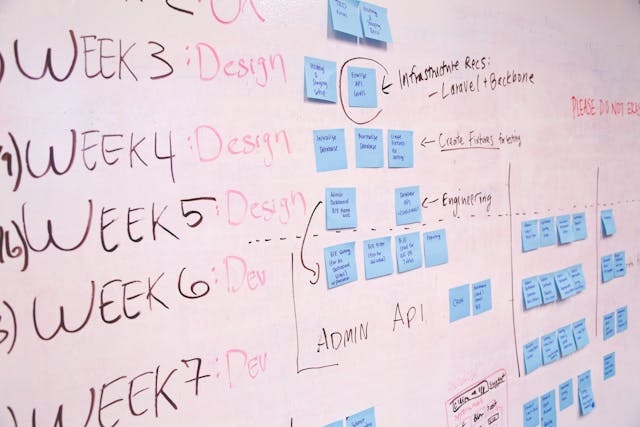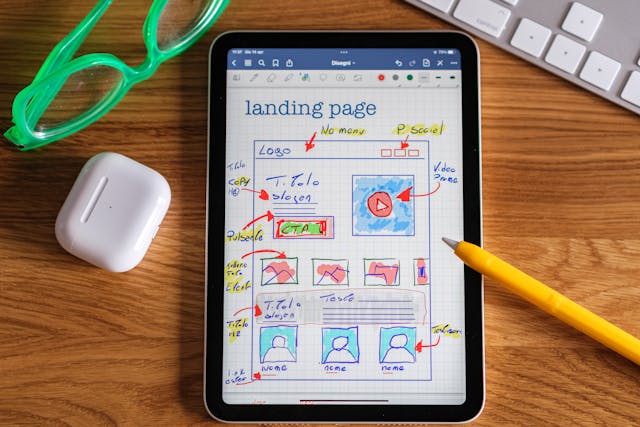
The Comprehensive Guide to the Software Project Lifecycle: From Inception to Evolution
The software project lifecycle is a structured framework that guides the development of software applications from their initial conception to ongoing maintenance and eventual retirement. This detailed exploration will provide you with a thorough understanding of each phase, the activities involved, and their significance in creating successful software solutions.
1. Initiation Phase
The initiation phase marks the beginning of the software project lifecycle. It's where ideas are born and evaluated for their potential value and feasibility.
Key Activities:
a) Idea Generation and Evaluation
- Brainstorming sessions to identify software needs or opportunities
- Market research to validate the idea's potential
- Preliminary cost-benefit analysis
b) Stakeholder Identification
- Identifying key decision-makers, end-users, and other affected parties
- Conducting stakeholder interviews to gather initial requirements and expectations
c) Feasibility Study
- Technical feasibility: Evaluating if the organization has the necessary technology and skills
- Economic feasibility: Assessing potential return on investment (ROI)
- Legal feasibility: Checking for any regulatory or compliance issues
- Operational feasibility: Determining if the project aligns with business operations
d) Project Charter Creation
- Defining high-level project goals and objectives
- Outlining project scope and boundaries
- Identifying key milestones and deliverables
- Assigning a project manager and core team members
e) Initial Risk Assessment
- Identifying potential obstacles or challenges
- Preliminary risk mitigation strategies
Outcome: By the end of this phase, there should be a clear understanding of what the project aims to achieve, its potential value, and whether it's worth pursuing.
2. Planning Phase
Once the project is approved, detailed planning begins. This phase is crucial for setting the project up for success.
Key Activities:
a) Requirements Gathering and Analysis
- Conducting in-depth interviews with stakeholders
- Creating user stories or use cases
- Defining functional and non-functional requirements
- Prioritizing requirements using techniques like MoSCoW (Must have, Should have, Could have, Won't have)
b) Scope Definition
- Creating a detailed project scope statement
- Defining project boundaries and exclusions
- Developing a Work Breakdown Structure (WBS)
c) Resource Planning
- Identifying required skills and team composition
- Estimating hardware and software needs
- Budgeting for all project phases
d) Project Schedule Development
- Creating a detailed project timeline
- Identifying dependencies between tasks
- Establishing milestones and deadlines
- Developing a Gantt chart or similar visual representation
e) Risk Management Planning
- Conducting a comprehensive risk assessment
- Developing risk mitigation and contingency plans
- Creating a risk register for ongoing monitoring
Outcome: A comprehensive project management plan that serves as a roadmap for the entire project.
3. Design Phase
The design phase translates requirements into a blueprint for the software solution.
Key Activities:
a) System Architecture Design
- Defining the overall structure of the software system
- Selecting appropriate technology stack
- Designing system modules and their interactions
- Creating data flow diagrams
b) Database Design
- Designing the database schema
- Creating entity-relationship diagrams
- Defining data models and relationships
c) User Interface (UI) and User Experience (UX) Design
- Creating wireframes and mockups
- Designing user flows and navigation
- Ensuring adherence to usability principles
- Conducting user testing on prototypes
d) Security Design
- Identifying potential security threats
- Designing authentication and authorization mechanisms
- Planning data encryption and protection measures
Outcome: A comprehensive design blueprint that guides the development phase.
4. Development Phase
This is where the actual coding takes place, bringing the design to life.
Key Activities:
a) Environment Setup
- Setting up development, testing, and staging environments
- Configuring version control systems
b) Coding
- Writing code according to the design specifications
- Implementing functionality module by module
- Following coding standards and best practices
c) Code Review
- Conducting peer code reviews
- Using static code analysis tools
- Refactoring code for improved quality and performance
d) Unit Testing
- Writing and executing unit tests for individual components
- Achieving desired code coverage
Outcome: A working software solution that's ready for comprehensive testing.
5. Testing Phase
Rigorous testing ensures the software functions as intended and meets all requirements.
Throughout these phases, project management methodologies play a crucial role. While traditional Waterfall approaches move sequentially through these phases, Agile methodologies like Scrum or Kanban involve iterative cycles, particularly during the development, testing, and deployment phases. Many organizations also adopt hybrid approaches, tailoring the process to their specific needs.
Understanding this comprehensive software project lifecycle helps stakeholders appreciate the complexity of software development. It underscores the importance of thorough planning, effective communication, and ongoing commitment to ensure the success and longevity of a software solution.
By following this structured approach, organizations can minimize risks, manage resources effectively, and increase the likelihood of delivering a high-quality software product that meets user needs and business objectives.






(0) Comment